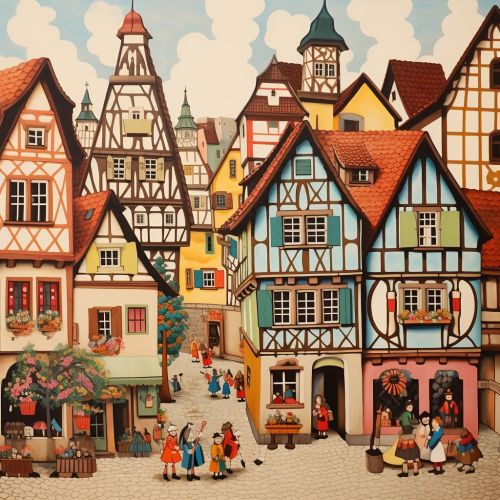Culture of Germany
Introduction
The culture of Germany has been shaped by major intellectual and popular currents in Europe, both religious and secular. Historically, Germany has been called Das Land der Dichter und Denker (the country of poets and thinkers). There are a number of public holidays in Germany determined by each state and many events of cultural significance.
Language
The German language is widely spoken in Germany. It is the most widely spoken first language in the European Union. The German language was once the lingua franca of central, eastern and northern Europe.
Literature
German literature dates back to the Middle Ages. The most celebrated of the early Germanic heroic poetry is the Nibelungenlied. The Grimm Brothers collected many German folk and fairy tales in the 19th century; these tales have since become deeply ingrained in Western popular culture.
Philosophy
Germany's influence on philosophy is historically significant and many notable German philosophers have helped shape Western philosophy since the Middle Ages. Germany was particularly important in the early modern period, with philosophers such as Leibniz and Kant.
Music
Germany is known for its classical music and composers such as Bach, Beethoven, and Brahms who were part of the traditional German school. Germany hosts some of the world's largest music festivals, such as Rock am Ring and Rock im Park.
Art
German art has a long and distinguished tradition in the visual arts. Germany has been the home of many famous artists and art movements, and several important art schools, such as the Bauhaus.
Cinema
German cinema dates back to the very early years of the medium with the work of Max Skladanowsky. It was particularly influential during the years of the Weimar Republic with German expressionists such as Robert Wiene and Friedrich Wilhelm Murnau.
Architecture
German architecture has a long, rich and diverse history. Every major European style from Roman to Post Modern is represented, including renowned examples of Carolingian, Romanesque, Gothic, Renaissance, Baroque, Classical, Modern and International Style architecture.
Cuisine
German cuisine varies greatly by region. Some regions of Germany, like Bavaria and neighbouring Swabia, share dishes with Austrian and parts of Swiss cuisine.
Sports
Sport in Germany is an important part of German culture. Football is the most popular sport in Germany, with more than 6.3 million official members of the German Football Association.
See Also
- German literature
- Music of Germany
- German art
- Cinema of Germany
- German architecture
- German cuisine
- Sport in Germany


